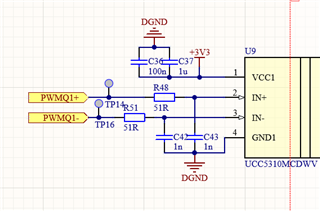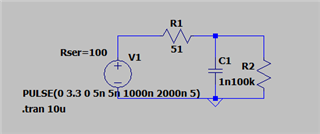Other Parts Discussed in Thread: UCC5310
Dear TI team,
We're using TMS320F28379DPTPT (HLQFP package). ePWM pin (100 kHz frequency) is input to gate driver which has RC filter (50 ohms and 1 nF). In this case current being sourced and withdrawn from MCU pin requirement is very high compared to the capabilities given in the datasheet (-4/+4 mA).
1. Does this affect the reliability of MCU in long term?
2. Does drawing current for long from multiple pins affect the operation of other pins? We're using 8 such ePWM pins for DAB converter and many other IOs for other purposes.
Let me know if you've any questions.




